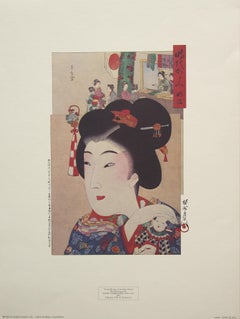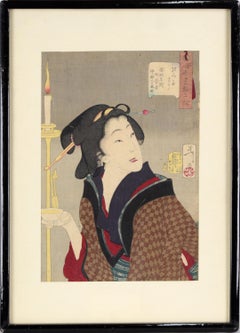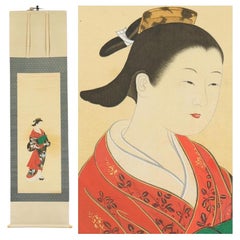Items Similar to A Set of Six Bust Portraits of Beauties - Jidai Kagami (Mirror of the Ages).
Want more images or videos?
Request additional images or videos from the seller
1 of 10
Yoshu ChikanobuA Set of Six Bust Portraits of Beauties - Jidai Kagami (Mirror of the Ages).1896-1898
1896-1898
$7,532.55
£5,500
€6,459.88
CA$10,564.77
A$11,588.54
CHF 5,975.77
MX$138,413.57
NOK 75,790.98
SEK 71,100.54
DKK 48,274.59
About the Item
CHIKANOBU, Yoshu (1838–1912)
A Set of Six Bust Portraits of Beauties - Jidai Kagami (Mirror of the Ages).
1896-1898
A Set of Six oban tate-e woodblock prints of okubi-e (bust portraits) of beauties, titled Jidai kagami (Mirror of the Ages), documenting the fashions of former times (from the Keicho to the Meiji era) in chronological order, each sheet with a beautiful woman in sumptuous costume depicted at the lower section and a rectangular panel at the top which makes a reference to the era, some sheets with lacquer and embossed details, published by Matsuki Heikichi, variously dated Meiji 29, 30 and 31 (1896-8), all signed Yoshu Chikanobu. Each sheet approx. 36 x 23.7 cm (14 1/8 x 9 3/8 in).
oyohara Chikanobu (1838–1912), better known to his contemporaries as Yōshū Chikanobu, was one of the most successful woodblock print artists of Japan's Meiji period. He lived at a time when Japan saw the reinstatement of the emperor as ruler and underwent rapid westernization. He worked both with traditional subjects, such as actors, courtesans, scenes of famous sites, beautiful women, and with topical subjects, such as the Satsuma Rebellion (1877) and the Sino-Japanese War (1894-1895). Chikanobu used the flat planes and decorative patterning of the ukiyo-e tradition to striking effect, adding brilliant colors, especially reds, purples, and blues to his compositions.
More precisely, Ukiyo-e, or ukiyo-ye (in Japanese: "pictures of the floating world"), is a genre of woodblock prints and paintings that flourished in Japan from the 17th through 19th centuries. It was aimed at the prosperous merchant class in the urbanizing Edo period (1603–1867). Amongst the popular themes were depictions of beautiful women, as is the case here with these okubi-e prints (i.e. bust portraits); kabuki actors and sumo wrestlers; scenes from history and folk tales; travel scenes and landscapes; flora and fauna; and erotica.
One of Chikanobu’s best series, A Mirror of the Ages shows women by fashion and hair style throughout history. Despite a sense of longing for the past, these prints are unmistakably modern and of their time. Each print depicts a beauty from a certain period in the lower part and customs at that time, in grisaille, in the upper part - a way to tell viewers about the latest fashion and historical backgroud at that time. The quality of printing is outstanding, especially in Chikanobu’s use of white for the rendering of the powdered faces. Indeed, Chikanobu was known as a master of bijinga (images of beautiful women), and for illustrating changes in women's fashion, including both traditional and Western clothing. For example, in the Mirror of Ages, the hair styles of the Tenmei era (1781-1789) are distinguished from those of the Keiō era (1865-1867).
To create a woodblock print, artists like Chikanobu first designed the image on paper and then transferred it to a thin, partly transparent paper. Following the lines on the paper, now pasted to a wooden block usually of cherry wood, the carver used to chisel and cut to create the original in negative—with the lines and areas to be coloured raised in relief. Ink was then applied to the surface of the woodblock. Rubbing a round pad over the back of a piece of paper laid over the top of the inked board eventually made the print.
- Creator:Yoshu Chikanobu (1838 - 1912, Japanese)
- Creation Year:1896-1898
- Dimensions:Height: 15.75 in (40 cm)Width: 11.34 in (28.8 cm)Depth: 1.19 in (3 cm)
- Medium:
- Period:
- Condition:Framed and glazed, overall size:.
- Gallery Location:London, GB
- Reference Number:Seller: 916911stDibs: LU141929017952
About the Seller
5.0
Vetted Professional Seller
Every seller passes strict standards for authenticity and reliability
Established in 1979
1stDibs seller since 2020
19 sales on 1stDibs
Typical response time: 5 hours
- ShippingRetrieving quote...Shipping from: London, United Kingdom
- Return Policy
Authenticity Guarantee
In the unlikely event there’s an issue with an item’s authenticity, contact us within 1 year for a full refund. DetailsMoney-Back Guarantee
If your item is not as described, is damaged in transit, or does not arrive, contact us within 7 days for a full refund. Details24-Hour Cancellation
You have a 24-hour grace period in which to reconsider your purchase, with no questions asked.Vetted Professional Sellers
Our world-class sellers must adhere to strict standards for service and quality, maintaining the integrity of our listings.Price-Match Guarantee
If you find that a seller listed the same item for a lower price elsewhere, we’ll match it.Trusted Global Delivery
Our best-in-class carrier network provides specialized shipping options worldwide, including custom delivery.More From This Seller
View AllA Group of twelve Courtiers
Located in London, GB
[CHINESE EXPORT WATERCOLOURS ON PITH PAPER].
Group of 12 Courtiers.
Mid to late nineteenth century.
12 hand painted water-colours on pith paper, pale blue silk borders, a few minor...
Category
Late 19th Century Other Art Style Figurative Drawings and Watercolors
Materials
Watercolor, Gouache, Rice Paper
Iris Kaempferi: No. 58 SHU-FU-RAKU
Located in London, GB
Iris Kaempferi: No. 58 SHU-FU-RAKU
Tokyo, Yoshinoen-Garden, circa 1910.
Hand-coloured woodblock print on handmade rice paper, numbered and captioned at top, outlined in ink. Framed...
Category
1910s Naturalistic Still-life Prints
Materials
Wood, Watercolor, Rice Paper
Iris Kaempferi: No.10 AKASHI-NO-UE
Located in London, GB
Iris Kaempferi: No. 10 AKASHI-NO-UE
Tokyo, Yoshinoen-Garden, circa 1910.
Hand-coloured woodblock print on handmade rice paper, numbered and captioned at top, outlined in ink. Fram...
Category
1910s Naturalistic Still-life Prints
Materials
Wood, Watercolor, Rice Paper
[CHINESE SCHOOL]. Two Watercolour Scenes.
By 19th Century Chinese school
Located in London, GB
[CHINESE SCHOOL].
Two Watercolour Scenes.
Possibly Canton ca.1820].
Very impressive large scale watercolours of Chinese scenes, presumably executed for the Western market by an an...
Category
1820s Naturalistic Landscape Drawings and Watercolors
Materials
Watercolor
Iris Kaempferi: No. 91 CHO-HIYEN
Located in London, GB
Iris Kaempferi: No. 91 CHO-HIYEN
Tokyo, Yoshinoen-Garden, circa 1910.
Hand-coloured woodblock print on handmade rice paper, numbered and captioned at top, outlined in ink. Framed in...
Category
1910s Naturalistic Still-life Prints
Materials
Watercolor, Rice Paper
PRÉVOST. Print from Collection des Fleurs et des Fruits
By Jean Louis Prévost
Located in London, GB
Original stipple engraving by Charles-Louis Ruotte, printed in colour and finished by hand.
[Paris, 1805]
Prévost came from a long line of French artists spanning 400 years. Jean-...
Category
Early 1800s Naturalistic Still-life Prints
Materials
Color, Engraving, Handmade Paper
You May Also Like
"Young Woman of the Meiji" by Yoshu Chikanobu, Lithographic Print.
By Yoshu Chikanobu
Located in Chesterfield, MI
Published by Portal Publications.
Printed in USA
Good Condition
24 x 18
Category
20th Century Portrait Prints
Materials
Lithograph
$120 Sale Price
20% Off
"Thirsty: the appearance of a town geisha in the Ansei era" - Woodblock on Paper
By Tsukioka Yoshitoshi
Located in Soquel, CA
"Thirsty: the appearance of a town geisha in the Ansei era" - Woodblock on Paper
From the series "Thirty-two Aspects of Customs and Manners" (Fuzoku sanjuniso)
Lively woodblock of a...
Category
1880s Edo Figurative Prints
Materials
Paper, Ink, Woodcut
歌麿筆Utamaro Hitsu as Sealed-From Six Houses of Yoshiwara-Publisher Omiya Gonkuro
Located in London, GB
-In light of new tariffs, we’ve applied a 20% discount off the market price of this piece to support our collectors in facing potential added costs. At the gallery, we work closely w...
Category
1990s Edo More Prints
Materials
Ink, Washi Paper, Woodcut
Japanese Nihonga Painting 19th Meiji Scroll Ukiyo-E Beautifull Lady
Located in Amsterdam, Noord Holland
◆ Ukiyo-e ◆ Beautiful woman painting ◆ Japanese painting ◆ Hand-painted painting ◆ Silk ◆ Hanging scroll ◆
This work is drawn by hand and on...
Category
Antique 19th Century Edo Paintings
Materials
Silk
$1,710 Sale Price
20% Off
Japanese Art Ukiyo-e Figurative Painting, Tomimoto Toyohina, Edo period
Located in Segovia, ES
Bijing-Ga series XXVII (Nº 27)
Title: Tomomoto Toyohina
Tomimoto Toyohina was a much sought-after geisha (entertainer) who performed narrative ballads accompanied by the shamisen. She was one of several non-prostitute beauties, including teahouse waitresses, whom Utamaro depicted repeatedly in the early to mid 1790s. She appears here with a brush in hand, dressed and combed with simple elegance.
This composition is from a six-print series comprising half-length portraits of famous beauties (Famous beauties of Edo).
Utamaro elevated Tomimoto Toyohina to the status of one of the three most renowned beauties of her age (together with Okita and Ohisa). She was from a prominent family of musicians that provided entertainment in the Yoshiwara. Toyohina’s appeal undoubtedly was as much due to her appearance as to her skills in singing, and Utamaro’s celebration of her would have further elevated the status of an already well-known lineage.
This image is part of the bijin-ga series (“Pretty women”) drawn by Mario BGil, based in the Kitigawa Utamaro woodblock print...
Category
2010s Edo Figurative Drawings and Watercolors
Materials
Paper, Crayon, Oil Crayon, Graphite
Portrait of a Woman
Located in New York, NY
Sadatora, Utagawa (active 1818-1844).
[Portrait of woman].
Japan, ca. 1825.
Original woodblock print.
Category
1820s Portrait Prints
Materials
Paper
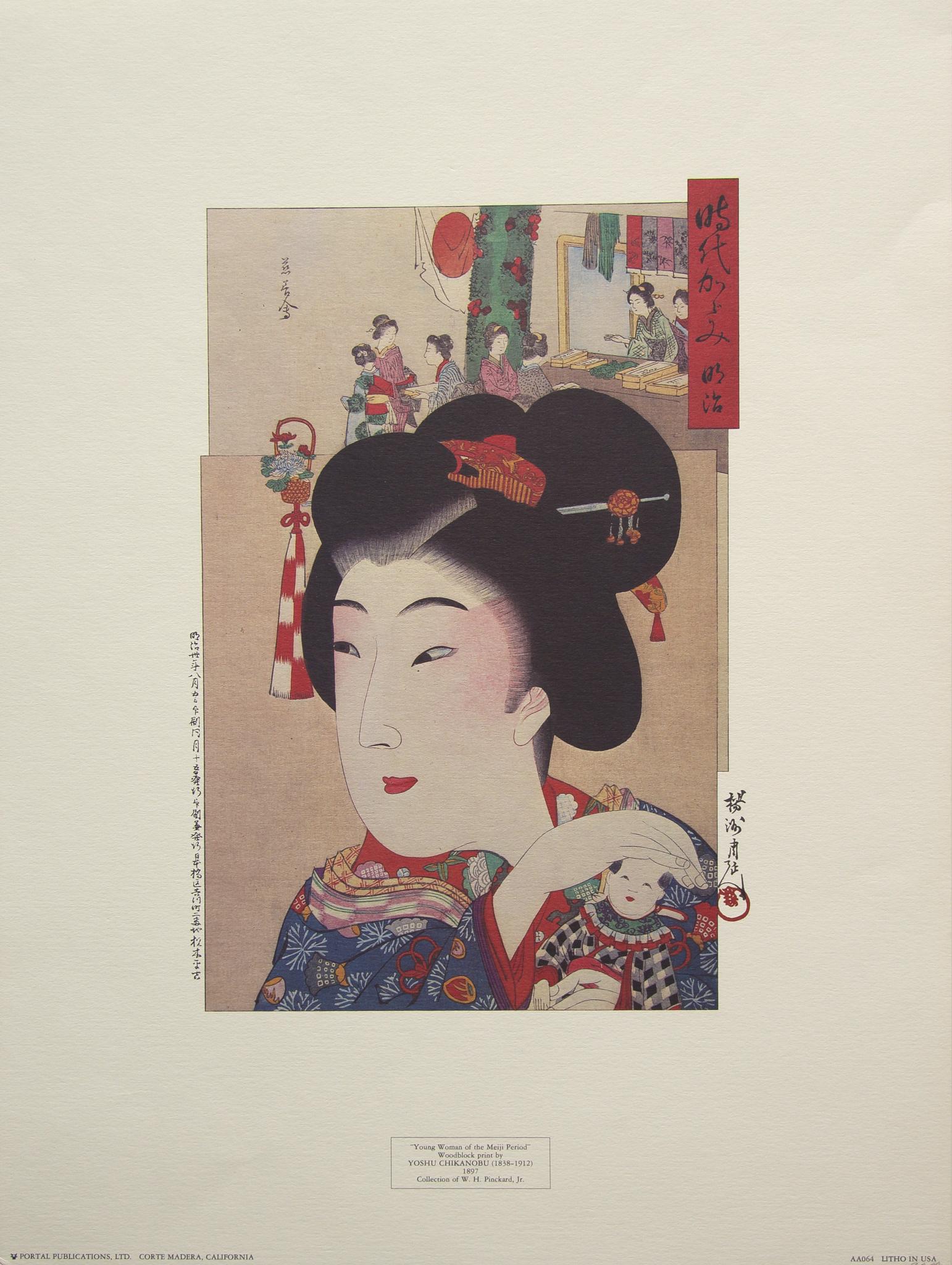
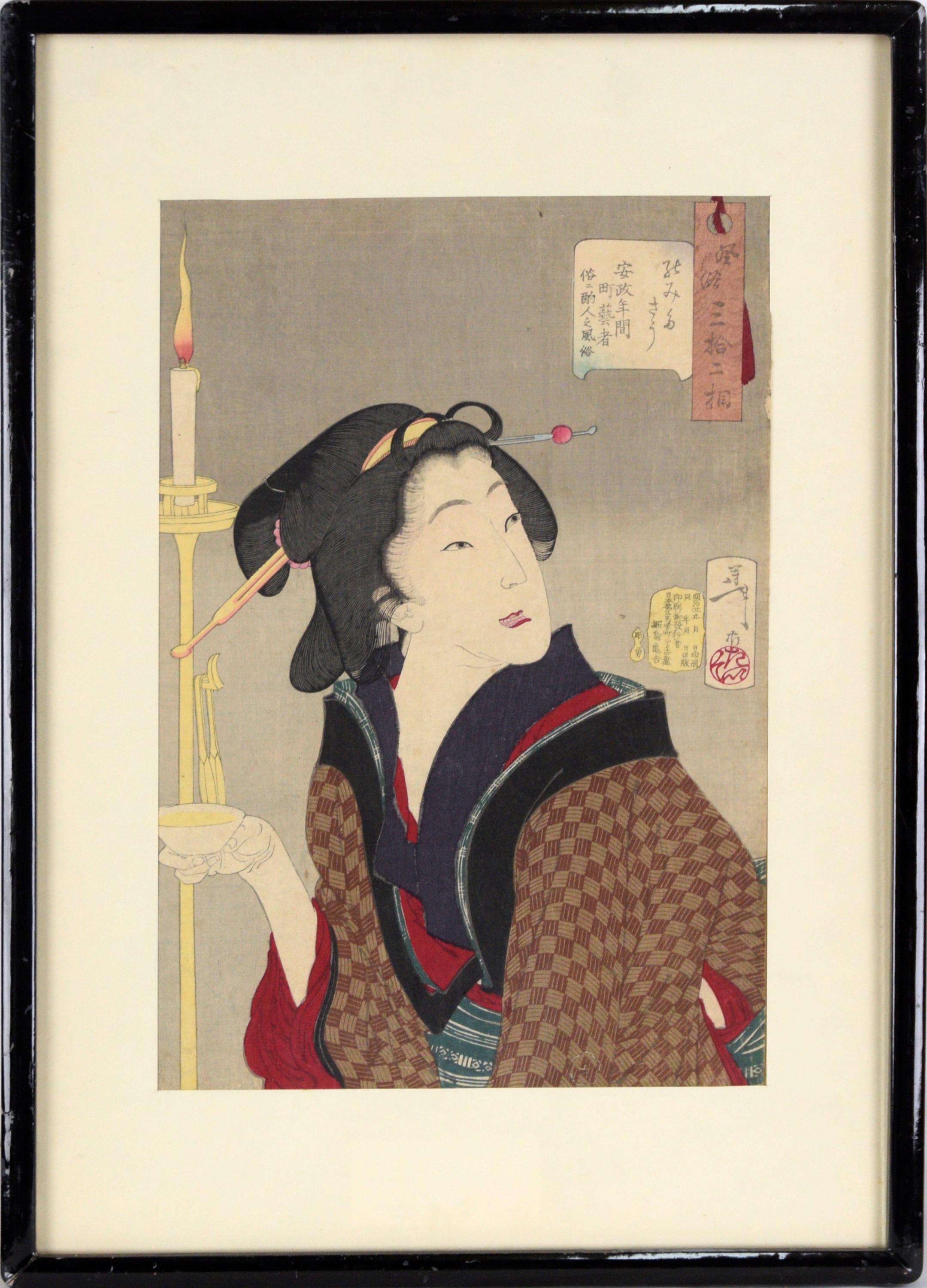
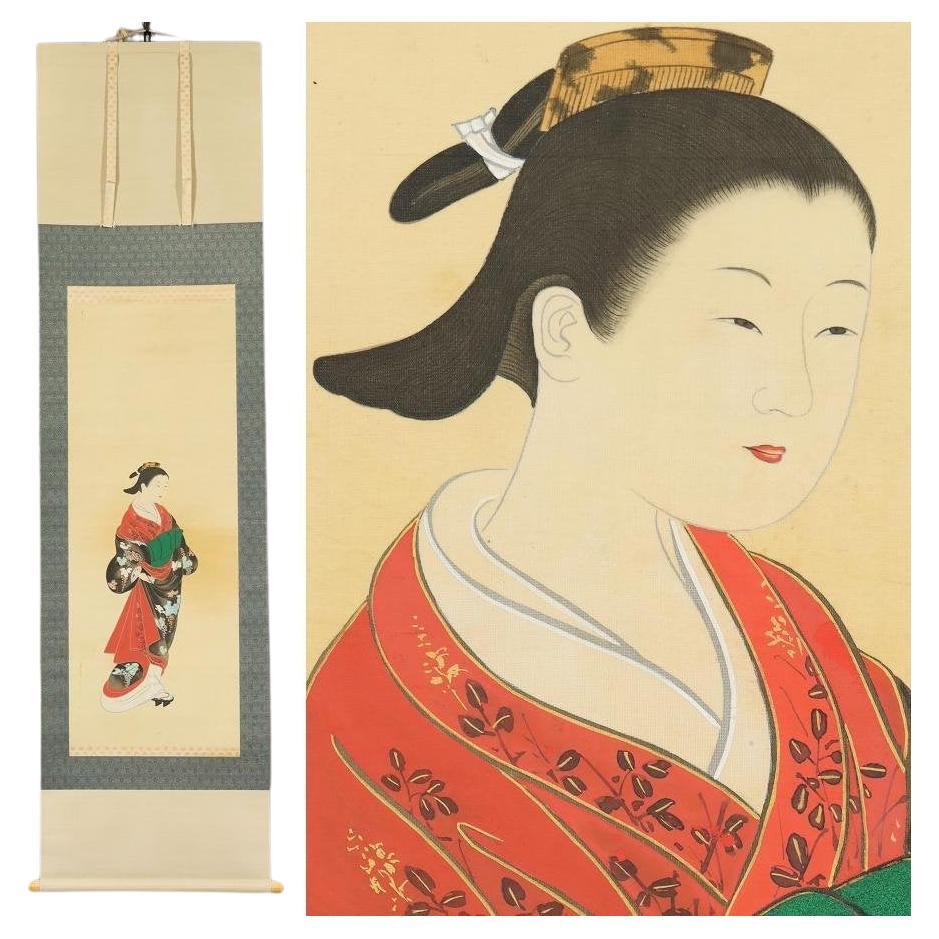
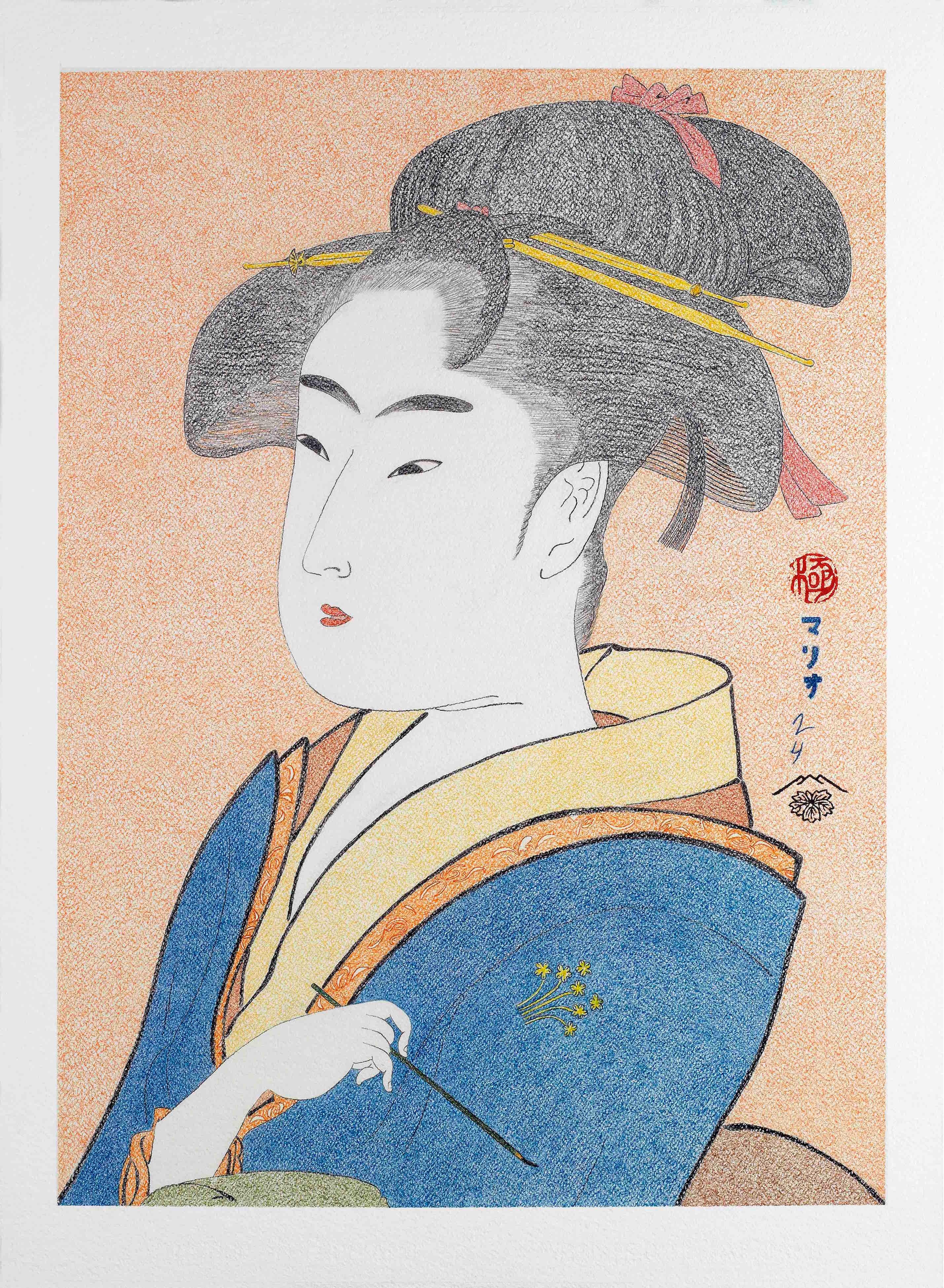
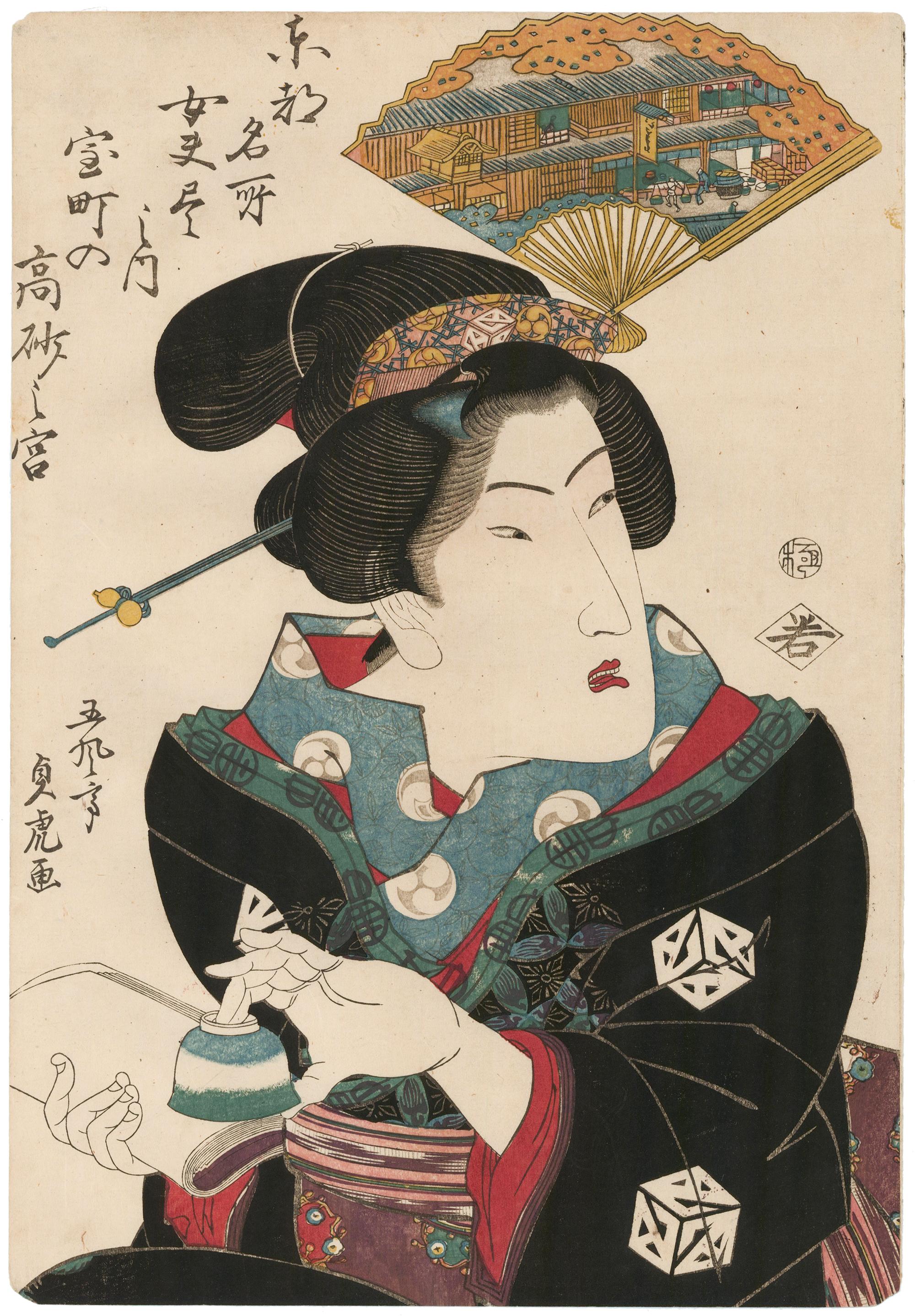
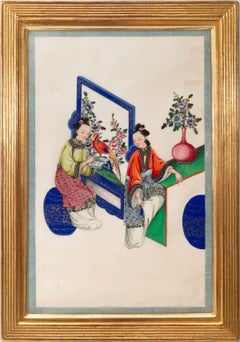
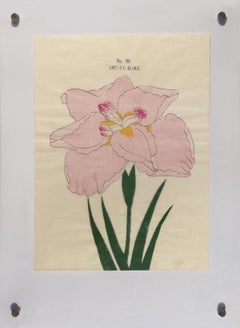
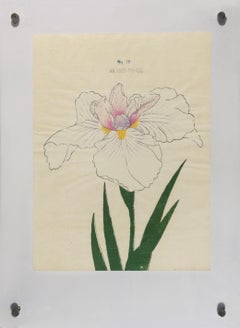
![[CHINESE SCHOOL]. Two Watercolour Scenes.](https://a.1stdibscdn.com/a_14192/1683810326664/86803a_master.jpg?width=240)
